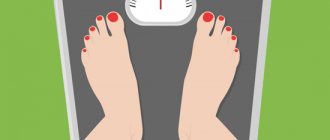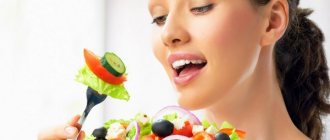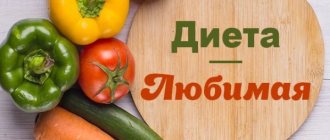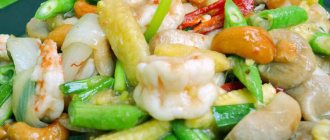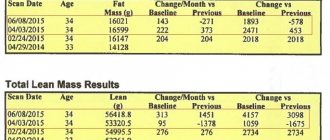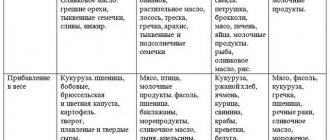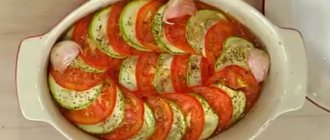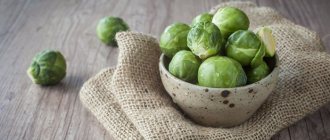A unique nutritional system was developed by the Frenchman Michel Montignac specifically for women. The problem of excess weight was well known to him: Montignac had been overweight since childhood, which caused him discomfort. No matter what he did, no matter what diet he went on, if the kilograms went away, it was for a short time, and then they returned in double volume. Montignac is an economist by training, but he has always been interested in pharmaceuticals. Later, he began to study processes related to metabolism in order to finally solve his problem of excess weight. Montignac managed to lose weight and maintain the result. Having developed a unique nutrition system, the nutritionist lost 16 kg in three months, and later they did not return. The Montignac method was a real breakthrough in nutrition. It turned out that you can allow yourself a lot and lose weight.
Michel Montignac is the author of 20 books about proper nutrition and weight loss. But his most famous work is “I eat, therefore I lose weight.” It was published in 1987, and then it was literally swept off the shelves of bookstores: many wanted to learn the secrets of effective weight loss without serious restrictions.
Glycemic index or basics
Montignac, studying the causes of excess weight, realized: extra pounds do not appear from the quantity and calorie content of food consumed. It's all because of the glycemic index (GI). The diet is dominated by foods with a high index - a large amount of glucose enters the blood. This causes insulin levels to increase, resulting in the accumulation of fat. If the product has a low indicator, then sugar does not release. You can eat such food without thinking about quantity, and what’s most surprising is that you lose weight. Michel Montignac's diet is based on this theory: there are “bad” foods that make you gain weight rapidly, and “good” foods that help you lose weight.
The glycemic index of Montignac diet products is everything below 50. The nutritionist recommends choosing foods labeled with indicators up to 40 (inclusive) for your daily diet for those who have just embarked on the path of fighting excess weight. “40 – 60” products can be consumed to a minimum and preferably only after achieving the first results. If the indicator is above 60, the food cannot be eaten: the number on the scale will increase.
GI is determined only for foods that contain a lot of carbohydrates. Protein foods (meat, fish) are assigned a zero index. You can use it without restrictions. A special table of products, where popular items are indexed, will help you figure out what is considered “good” carbohydrates and what is “bad”.
Table - Product indexing
| High/Medium | Meaning | Short | Meaning |
| White bread/buns | 95 | Bran bread | 50 |
| Baked potatoes | 95 | Peas (cereals) | 50 |
| Honey | 90 | Unpeeled rice | 50 |
| Sticky rice | 90 | Grape | 45 |
| Cornflakes | 85 | Buckwheat | 40 |
| Boiled carrots | 85 | Fresh juice | 40 |
| Sugar | 75 | Pasta (coarsely ground) | 40 |
| Boiled potatoes | 70 | Oat flakes | 40 |
| Cleaned white rice | 70 | Classic yogurt, milk, kefir | 15 – 35 |
| Beet | 65 | Lentils | 30 |
| Banana | 60 | Rye bread | 30 |
| Melon | 60 | Apples | 30 |
| Canned corn | 57 | Cherry | 22 |
| Pasta (highest grade) | 55 | Mushrooms | 10 |
| Oatmeal cookies | 55 | Tomatoes | 10 |
| Bulgur | 55 | White cabbage | 10 |
| Ice cream | 52 | Avocado | 10 |
| Sweet yogurt | 52 | Parsley, basil, oregano | 5 |
Those losing weight will have to give up sugar. But there are no restrictions on salt, as in many diets. The basis of the food system is vegetables, fruits, dairy products, lean meat, sea and river fish. With such a diet, you don’t have to worry about hunger.
The essence and principles of the Montignac diet
The Michel Montignac method is a diet that does not imply restrictions on food consumption. It is based on the right choice and combination of products.
It is important to know! Insulin is the culprit behind fat storage. It is produced in our body when blood glucose levels are elevated. What should a person who wants to lose weight do? Keep the level of this hormone to a minimum by eating foods that do not cause an insulin “spike.”
In order for the technique to be beneficial and effective, when starting to lose weight, it is worth familiarizing yourself with the principles of the diet. Remember: there are “good – slow” and “bad – fast” carbohydrates. “Bad” carbohydrates include:
- sugar and sugar-containing products (jam, candies, sweets);
- White rice;
- White bread;
- pasta;
- alcohol in any form;
- potato and corn dishes;
- boiled carrots and beets (these products contain a lot of sugar);
- melon, bananas.
“Good” carbohydrates are absorbed by the body without causing an increase in blood sugar:
- coarse grains;
- legumes: lentils, peas, cauliflower;
- fruits and vegetables containing a minimum of glucose and a maximum of fiber;
- freshly squeezed fruit juices;
- wholemeal bread;
- dark chocolate (cocoa no more than 60%);
- nuts;
- mushrooms.
1. When choosing products, give preference to those with a low glycemic index, that is, GI less than or equal to 50. You can see some list of such products below:
Main principles
By eating according to Montignac, you can achieve excellent results: up to minus 12 kg in just a month. It should be understood that the results are an individual concept, they depend on the metabolism of a particular person, his initial weight. But with the French system, everyone loses weight - some earlier and faster, some later and slower. In order for the result to please you, you must not deviate from the key principles of the Montignac diet. They are simple and clear.
- Focus on “good” products. First you will have to monitor the indicator of each dish. Hang the printed chart on your refrigerator. This will make it easier to plan your daily diet. Soon you will remember what you can and cannot do, and you will rarely refer to the list.
- Fats and carbohydrates separately. Mixing is not allowed within the same meal. During the period of weight stabilization, rare “breakdowns” are acceptable, but first you need to carefully monitor the implementation of the nutritionist’s recommendations.
- Avoid feeling hungry. Montignac is sure that hunger is the worst enemy of those losing weight. The body immediately adapts to work in a stressful mode and begins to accumulate excess. The nutritionist recommends not skipping meals, there should be at least three. It is advisable to establish a routine: eat at the same time every day.
- For breakfast - fresh fruit. It is important to start the day right - with juicy fruits. They should be consumed on an empty stomach. Fruits activate the intestines and are perfectly digestible.
- Replace white bread with black/gray bread. There is no need to give up bread. The nutritionist believes that there is “right” and “wrong” bread. The “right” kind (gray, black, wholemeal flour) does not make you fat.
- “No” to sugary drinks, store-bought juices and soda. They contain a lot of sugar, which means they have a high GI. The synthetic additives that manufacturers use will also not bring any benefit. An alternative is freshly squeezed juices, unsweetened tea, herbal infusions. You can drink coffee, but only without caffeine.
- Establish a drinking regime. Drink plenty of water. The mandatory norm is two liters. Mineral is suitable, but always non-carbonated. Liquid is needed to normalize metabolism. You cannot drink water immediately before meals and during meals, during breaks - as much as you like.
The main taboo of the diet is alcohol and sugar. When your weight returns to normal, you can occasionally indulge in a couple of glasses of wine. But you will have to give up beer forever. The foamy drink contains malt (GI - 110), which leads to rapid weight gain. There are no concessions with sugar. A sweet tooth will be saved by a sweetener, but only when the excess goes away.
Rules and principles of diet
Michel Montignac developed the basic principles of healthy eating. Compliance with them leads to normalization of body weight. The author gives advice:
- Start your morning with fruit, eating it before breakfast to get your bowels moving.
- Do not mix carbohydrates and fats during the same meal.
- Include vegetables and fruits containing fiber in your diet - this improves the removal of toxins.
- Avoid alcohol (with the exception of a glass of dry red wine).
- To improve thermogenesis (the body's production of heat for the functioning of systems), use turmeric, pepper, and ginger.
- Eliminate sugar from your diet.
Cons and pros
The nutritional system that Montignac proposed revolutionized the idea of diets. The method has many advantages, but it is not without its disadvantages. The table will help you evaluate the advantages and get acquainted with the disadvantages of the Montignac diet.
Table - Advantages and disadvantages of the Montignac nutrition system
| pros | Minuses |
| - High efficiency; - ease of compliance; — no side effects; - no feeling of hunger; — absence of a stress factor; - varied diet; - the opportunity to eat delicious food; - developing correct eating habits; - lasting result | - It’s hard to remember the division of food; - it takes time to see the result; - you can’t skip a meal; — it is not always convenient to follow the principles (for example, when visiting); - not suitable for everyone |
The Montignac diet for weight loss compares favorably with other methods by the absence of a “hunger strike”. It does not harm the body, but rather helps improve health.
- Exchange processes. By adhering to the French method, you can normalize your “lost” metabolism.
- Digestion. The diet improves the functioning of the pancreas and gastrointestinal tract.
- Heart and blood vessels. The nutritional system helps prevent the development of cardiovascular diseases and type 2 diabetes.
- Female organs. Doctors recommend using this method of nutrition for women with PCOS (polycystic ovary syndrome): “low” foods will help stabilize weight, normalize hormones, and protect the pancreas.
The diet requires you to be careful when purchasing products and carefully study the composition. Sugar, which you need to give up while losing weight, can be found in places you wouldn’t expect to see it: for example, in some types of ham.
Who is not suitable for?
The diet is suitable for men and women of all ages, but is not recommended for adolescents during puberty. If you have chronic diseases, it is better to consult your doctor before starting a diet. The main contraindications for such a nutrition system:
- kidney diseases;
- some gastrointestinal diseases;
- metabolic disease;
- postoperative period;
- reduced immunity as a result of long-term illness.
During pregnancy and while breastfeeding, you cannot start a diet. During these periods, it is important to receive all the necessary substances, and the French method, although varied, excludes the use of many products.
Never start losing weight by changing your diet if you are not sure about your health. Getting tested is a matter of one day.
Montignac diet: what rules to follow and what to eat in the first phase
The French nutritionist divided the invented system into periods. Phase 1 is aimed specifically at weight loss. The duration is determined by the person losing weight. You can move on to the next stage when the weight is comfortable. You should not expect quick results: weight loss occurs slowly, and the initial phase rarely ends after the first month. Remember the basic rules of the first phase.
- Follow the index. Consume only those foods whose GI does not exceed 40. And you don’t even have to watch the serving size.
- Eat separately. Adhere to the principle of separate nutrition: carbohydrates separately, fats separately.
- Have a hearty breakfast. After the first meal you need to feel full. A prerequisite is carbohydrates + proteins + fiber.
- For lunch - protein. During the day you need to eat protein foods and foods containing lipids. The lunch menu must include meat or fish.
- Do not overload the body at night. Seven o'clock in the evening is the last time you can eat. Dinner is always easy. There are two options: protein-lipid (sea fish, any meat) or protein-carbohydrate (cottage cheese + vegetables).
The first stage is considered strict, but it is actually easy to complete the distance and wait for visible results. The menu for the “Lose Weight” stage can be varied: there are many permitted products, all you have to do is use your imagination. The “permission” is presented in the table.
Table - List of permitted products by category
| Vegetables | Meat, offal | Fish | Seafood | Milk products |
| - Celery; - beans; - eggplants; - spinach; - onion; - pepper; - asparagus; — cabbage (white, cauliflower); - tomatoes; - zucchini; - mushrooms; - pumpkin | - Lean pork; - beef; - beef liver; - rabbit; - chicken fillet; - chicken liver; - turkey | — Dorado; - saury; - catfish; - hake; - halibut; - sardine; - carp; - tuna; - trout; - salmon | - Shrimps; - mussels; - crabs; - oysters; - squid | - Cottage cheese; — classic yogurt (no additives, no sugar); - kefir; - milk; - processed cheese; - hard cheese |
You can also eat eggs – both chicken and quail. Be sure to include fruits in your diet. No diet can boast such an extensive list of allowed foods.
The dairy product index depends on the fat content of the product. The lower the percentage, the better. Products with additives are not welcome.
For clarity: detailed weekly menu
When creating the Montignac diet menu for the week, at first use the list of allowed foods or a table with an index (only those with an index below 40 are allowed). An example of a detailed menu is presented below. Only decaffeinated coffee is allowed, weak tea. It is prohibited to add sugar to hot drinks.
Table - Weekly menu of the first phase
| Days | Breakfast | Dinner | Dinner |
| Monday | — Pear/orange; - bran bread; - coffee; - pearl barley porridge; - low-fat milk | — Cabbage salad; - mackerel; - unsweetened tea | -Vegetable soup; - a slice of ham; - plain yogurt/tea |
| Tuesday | — Mandarin; - kefir 1%; - oatmeal; - Herb tea | — Vegetable salad (for dressing, a little olive oil and lemon juice); - two slices of cheese; - Black tea | — Lentils (you can add soy sauce); - tomato salad; - fresh juice |
| Wednesday | - Cherries; - Rye bread; - cottage cheese; - coffee | - Cheese; - vegetable salad; - baked beef; - fresh juice | - Mushrooms; — vegetable soup; - yogurt |
| Thursday | - Apple; - fried eggs; - a couple of slices of ham; - coffee | - Vegetables; - grilled fish; – black/herbal tea | — Cauliflower baked with cheese; - greenery; - yogurt |
| Friday | — Mandarin/orange; - natural juice; - oatmeal; - unsweetened tea. | — Boiled chicken fillet; - vegetable stew; - tea | — Brown rice/eggs; - cherry; - juice |
| Saturday | - Apple; - yogurt; - pearl barley porridge; - coffee; - bran bread | — Beef cooked in the oven; - grilled vegetables; - weak tea | — Pasta (hard varieties); - ham; - vegetable salad; - kefir |
| Sunday | — Pear/kiwi; - black bread; - low-fat milk; — cottage cheese 2%; - coffee | — Fish baked with vegetables/salad of seafood, herbs and vegetables; - tea | - Berries; — fruits (any allowed); - rice; - tea |
Breakfast is divided into two parts. First, eat fruit, and after 15 minutes start a full meal. Fruits will “tune” the body in the right way - they will activate the intestines.
Authorized and Unauthorized Products
The starting point when creating a dietary menu is the calculation of the glycemic index of the product. This parameter is called GI for short and is measured in numbers. With its help, a person can measure the amount of glucose entering the blood after eating. The higher the GI of a product, the more harmful it is to your health and figure. The basis of nutrition consists of dishes with a low glycemic index (less than 50). Some tips:
- When eating food with an index of 20-50, do not combine it with high-fat foods;
- There should be at least 3 hours between meals;
- Products with a GI of less than 15 do not need to be limited. They can be added to any recipes and mixed together.
To achieve the effect as quickly as possible, you will have to eat at least 3 times a day, keeping the same time for breakfast, lunch and dinner. The list of permitted products includes:
- Vegetables (eggplant, celery, pumpkin, zucchini and asparagus are the most effective in the fight against excess weight);
- Fruits (green, firm apples are a great way to satisfy your hunger between meals);
- Lean meat and fish (chicken fillet, liver, turkey fillet, boiled veal, salmon, carp, trout);
- Seafood (mussels, squid, oysters);
- Diet bread;
- Low-fat dairy products (kefir and milk with a fat content of no more than 1.5% can be included in the menu daily).
If you love eggs, then you can include no more than 1-2 boiled chicken eggs or 5-6 quail eggs in your diet. You don’t have to remove the yolk, despite the high fat content in the composition.
The following are excluded from the Montignac diet:
- Pasta and products made from wheat flour (with the exception of pasta made from durum wheat);
- Potatoes and corn (when it comes to vegetables and cereals);
- Fast food;
- White rice;
- Alcoholic drinks;
- Sausages and fatty meats (with the exception of natural ham);
- Condiments (ketchup, mayonnaise).
Remember! By calculating the glycemic index, you can independently adjust your own diet, as well as develop an individual diet based on your personal food preferences.
We consolidate: features of the second phase
Phase 2 of the diet is aimed at consolidating the results that were achieved. The second stage can last as long as you like. The allowed products are the same as in the first phase, but are added to them with an index of 40 - 60. They need to be included in the diet gradually, so the sample menu will not change much at first. You can eat oatmeal cookies in the morning instead of bread, add banana, kiwi, mango to fruits, and replace classic yogurt with sweet ones.
The duration of the phase is determined individually. As before, natural coffee, sugar, carbonated drinks, and “bad” carbohydrates are prohibited. In addition to expanding the diet to include products with an index of up to 60, the second phase differs from the first in four features.
- Sometimes you can mix fats and carbohydrates. To prevent this from affecting your waistline, fatty foods are always consumed in tandem with the main source of fiber – vegetables.
- You can afford alcohol. True, only dry wine, infrequently and in small quantities (a glass at dinner once a week). You can drink alcohol only after eating.
- More fish. Nutritionists recommend eating fish more often during the consolidation stage. It is better to choose species rich in Omega-3 (tuna, salmon, mackerel).
- We include legumes in the diet. Lentils, beans, and peas should be included in your daily diet. They contain a lot of vegetable protein and fiber, which is good for the digestive system. In addition, legumes provide a feeling of fullness for a long time.
The second phase, in fact, is the beginning of leaving the diet. First, foods with a GI of up to 60 are added to consolidate the result, and then the rest are gradually introduced into the diet. After going out, don’t forget to take care of yourself: don’t overeat, have dinner before seven in the evening, don’t abuse “harmful foods.”
Phases of the Montignac diet
Losing weight with the Montignac diet can be divided into 2 phases.
The first phase is weight loss. A start is removing unwanted foods from your diet. Just cross it out and that's it? No, this is unlikely to have any effect. It is important to understand for what purpose you are doing this, what you want to achieve.
The essence of this phase is to minimize foods with a high glycemic index - GI more than 70. As a result, after eating, the body will produce less insulin, which completely eliminates the process of storing fat in the body and triggers lipolysis - the breakdown of accumulated fat by the body.
During the first phase you can consume:
- whole grain bread with fruit jam (prepared without sugar);
- low-fat yogurt, cottage cheese;
- oatmeal and muesli without sugar and honey;
- fish, low-fat poultry meat;
- eggs, mushrooms;
- fruits vegetables;
- porridge with water, durum wheat pasta;
- weak tea with chicory.
The list of allowed foods in this phase is quite wide, so you definitely won’t have to go hungry.
As for the duration of this phase, it cannot be determined exactly. Its end is indicated by the achievement of the desired result.
The second phase is weight stabilization and control.
Have you mastered the new nutrition methods, have you lost extra pounds? Time to move on to the second phrase - it lasts for the rest of your life. If there were strict restrictions in the first stage, they will loosen a little in the second. You no longer need to live by strict rules; you can adjust them to suit your body.
The most harmful product is still sugar. No concessions, no deals with the body. The maximum that can be allowed is a substitute. What about such a healthy product as honey? It’s better not to use it, there will be no benefit from it. Perhaps as a medicine - 1 tsp. in a day.
Returning to old habits can cause the weight to return. But there is no need to torture yourself! Whatever one may say, sometimes you really want something sweet. Don’t deprive yourself of this joy: learn how to make homemade chocolate mousses, raw candies from nuts and dried apricots, but you don’t need to deprive yourself of a piece of cake either.
Recipe for homemade sweets made from nuts and dried apricots:
For 15-20 candies you need 100 g of cashews (or other nuts) and a glass of dried apricots. Soak the nuts and dried apricots in water for 1 hour, then drain the water and blend in a food processor until smooth.
Roll the resulting mass into balls and roll them in sesame seeds, coconut flakes or cocoa. Place the candies in the refrigerator for 30 minutes.
What to do in phase 2 with foods containing starch? Eat, but not more than once a week.
About fruits. Both in the first and second phases, they are allowed to be eaten in any quantity. Sometimes you can add a spoonful of cream to the strawberries.
Beverages. You can experiment with alcohol in phase 2. Allow yourself a glass of dry wine, but avoid gin, whiskey and champagne, they contain a lot of sugar.
Losing weight deliciously: 4 recipes for variety
The nutritional system developed by a French nutritionist has acquired an army of fans due to the fact that it promotes the idea of “losing weight can be delicious.” The list of permitted foods is large, so you can eat a varied diet and not necessarily simple dishes. If you think that food should be fun and love to cook, then repeat four popular recipes for the Montignac diet. The dishes will destroy the idea of dietary food, because there is no shame in serving them to guests.
The principle of “work” of the French diet is designed in such a way that you can eat the same foods every day. But the author of the nutrition system himself insisted that the process of preparing dishes is important for losing weight. This is how correct eating habits are instilled, and a person understands that he can enjoy amazing tastes and not be afraid of excess weight.
Chicken breast in yogurt
Peculiarities. Great option for lunch. The dish is prepared easily and quickly. Instead of an oven, you can use a slow cooker.
Ingredients:
- chicken fillet – 300 g;
- unsweetened yogurt without additives - a glass;
- pepper, salt - optional.
Cooking
- Pound the chicken breast using a meat mallet.
- Salt and pepper the meat. The diet does not prohibit seasonings, but do not overuse them.
- Place the chicken on a baking sheet and pour over the yogurt. Bake until done at 180°C. The time depends on the technique, but on average it takes 20 minutes.
For a dietary diet, you can bake any meat in yogurt. The recipe will remain the same, only the cooking time will increase.
Zucchini soup
Peculiarities. Light soup can be prepared for dinner. The dish turns out tender, but at the same time has an expressive taste.
Ingredients:
- onion - one medium head;
- zucchini - two medium vegetables;
- chicken broth - half a liter;
- cream - half a glass;
- olive oil - a tablespoon;
- garlic - clove;
- curry, salt - to taste.
Cooking
- Cut the zucchini into slices, the onion into half rings.
- Sauté the vegetables in a frying pan with a small amount of olive oil. Vegetables should not be fried; it is important to remove them from the heat while they are soft.
- Transfer the stewed vegetables to a blender. Beat. Add seasonings, broth, cream. Mix with a blender.
- Heat the puree soup on the stove until it boils.
Instead of zucchini, you can use any vegetables that are allowed. Soup with champignons or cauliflower will turn out no less tasty according to this recipe.
Fish solyanka
Peculiarities. You can take any red fish, but sturgeon or trout are better. The cooking process will be significantly reduced if the broth is prepared in advance.
Ingredients:
- red fish – one medium;
- onion - two onions;
- carrots - one piece;
- water - three liters;
- pickled cucumbers - five small;
- cucumber pickle – half a glass;
- tomato paste - one tablespoon;
- olives - jar;
- lemon - one;
- olive oil - by eye;
- salt - to taste.
Cooking
- Clean and gut the fish. Boil broth from the head, tail and fins (three liters of water, a whole onion and carrots).
- Finely chop the onion and dice the pickled cucumbers.
- Lightly fry the onion, add chopped cucumbers to the pan. Simmer for three minutes. Add half a cup each of broth and brine to the pan. Simmer for 15 minutes.
- Strain the fish broth. Chop the fish and boil it in the broth.
- Add the dressing from the pan to the pan with the broth and fish. Bring the hodgepodge to a boil.
- When serving, place olives in a bowl (quantity as desired) and squeeze the juice from a lemon wedge.
Boiled carrots are assigned a high GI of 85. But in broth they are needed only for flavor: you won’t eat them.
Curd muffins
Peculiarities. During the diet you have to limit yourself to sweets. For those with a sweet tooth, healthy baking recipes will help you out. Muffins are made from low index ingredients. Since a sweetener is used, it is better to treat yourself to dessert by moving to the second phase.
Ingredients:
- cottage cheese 0% - 300 g;
- egg white - from one egg;
- dried apricots and prunes - by eye;
- bran - two tablespoons;
- vanillin, stevia sweetener - to taste.
Cooking
- Mix cottage cheese, egg white and finely chopped dried fruits.
- Add bran, vanillin, sweetener to the mixture. To stir thoroughly.
- Place the mixture into molds. Bake for half an hour at 200°C.
You should not add raisins to desserts. Especially in the first phase. His GI is 65.
Method rules
Monsieur Michel Montignac suggests dividing all food into “bad” and “good”. This depends on their glycemic index, that is, the higher the index, the more “harmful” the product is, since it stimulates a rapid increase in sugar levels. The starting point of the diet is 100 of glucose itself. All food products are conventionally divided into several categories.
- The most undesirable ones have a level from 70 to 100. These include honey, white sugar, sweets, baked goods made from white refined flour, corn, beer, carbonated drinks, sugary fruits and dried fruits, starch.
- Less dangerous, but subject to reduction in the diet, are food products with an index of 50 to 70. These are bread and pasta made from wholemeal flour, fruits, cereals such as brown rice, millet and rolled oats. They cannot be completely excluded, as they contain vitamins, fiber, and beneficial microelements.
- The healthiest foods are those with an index of less than 50. Namely: buckwheat, pearl barley, natural yogurt, low-fat kefir, freshly squeezed juice, vegetables, herbs, dark chocolate, nuts, eggs, apples, peaches, beans, mushrooms, citrus fruits.
Having dealt with the “harmfulness” of foods, in order to successfully lose weight and maintain weight, you need to adhere to simple rules of the diet menu:
- To get rid of extra pounds, you need to minimize foods whose index is above 50-60 units. Or eat them, but only accompanied by fiber.
- Combine carbohydrate-containing foods with carbohydrates or proteins, but not with fats.
- Fat-containing foods in the recipe should be paired with protein foods.
- The interval between menus during the day should be at least 3 hours. Moreover, the higher the index, the longer it should take until the next snack.
If a person adheres to Michel Montignac’s diet, he will trigger a weight loss mechanism, and subsequently will not gain weight.
To learn what the glycemic index is, watch this video:
Nutritionist opinion
The opinion of nutritionists about the nutritional system invented by Montignac is ambiguous. Many people think that the method is outdated. Experts are skeptical about not counting calories, but only taking into account the index. In addition, it has been proven that GI can vary depending on the freshness of the product and method of preparation. The fact that the author of the method paid attention only to nutrition, without taking into account the possibility of accelerating the result with the help of physical activity, is criticized. This omission is considered the weakest point of the method.
There are also many positive reviews from doctors about the French nutrition system. The absence of a “hunger strike”, a varied and balanced diet, developing the right eating habits - nutritionists believe that these principles are important to get closer to the dream of an ideal figure.
Canadian scientists have conducted a number of studies related to the effect of diet on the body. It turned out that already at the first stage the amount of triglycerides in the blood decreases, the concentration of which leads to the development of atherosclerosis.
Reviews of the Montignac diet from those who have tried it on themselves are different - both enthusiastic and not so enthusiastic, you can read them by visiting the official website. Some managed to lose 10 kg in three months, others the same amount in six months - everyone has their own path to an ideal figure. There are many stars among fans of the French weight loss method. Jennifer Aniston, Catherine Zeta-Jones, Brad Pitt, Renee Zellweger experienced the “Eat and Lose Weight” principle in action. The most ardent fan of Montignac's food philosophy is Kylie Minogue. She has been following the recommendations of a nutritionist for many years, and judging by the singer’s ideal figure, the method works.
Let's sit down at the table
Portions and calories
The good news is you don't have to count calories. The author of the diet considered this matter completely unnecessary. The main thing here is not the number of calories, but what exactly you eat, he said.
You can put as much as you can on a plate. However, how to avoid overeating, you ask?
Portion size
The method does not give clear recommendations on the size of portions - it is believed that food with a low GI will bring a good feeling of fullness and you simply will not be able to eat more than you need. However, there are still some restrictions and they are associated solely with a sense of proportion.
- serving of fish or meat – 150-200 g
- durum pasta – 160 g dry
- one plate of oatmeal - approximately 4 tbsp. spoons of dry cereal.
- whole grain bread – three sandwiches are allowed during breakfast (150g)
Example menu
With such rather complex rules for combining products, it’s quite difficult to create a menu, wouldn’t you agree?
It must be said that Michel Montignac published several books that became bestsellers, on the pages of which he presented, among other things, recipes for dishes - mostly Mediterranean and French dishes, rich in seafood, unsaturated fats, and vegetables.
When creating a menu for the week, remember the rules of incompatible products.
For about a day it looks like this:
- Breakfast
Herbal or fruit tea.
Oatmeal topped with low-fat cheese.
Apples.
- Dinner
Salad of cheese, ham, boiled egg, tomato and olive oil.
For dessert - a few pieces of dark chocolate.
- Snacks – almonds, hazelnuts.
- Dinner
Vegetable soup
Green salad
Stewed mushrooms
Apples



